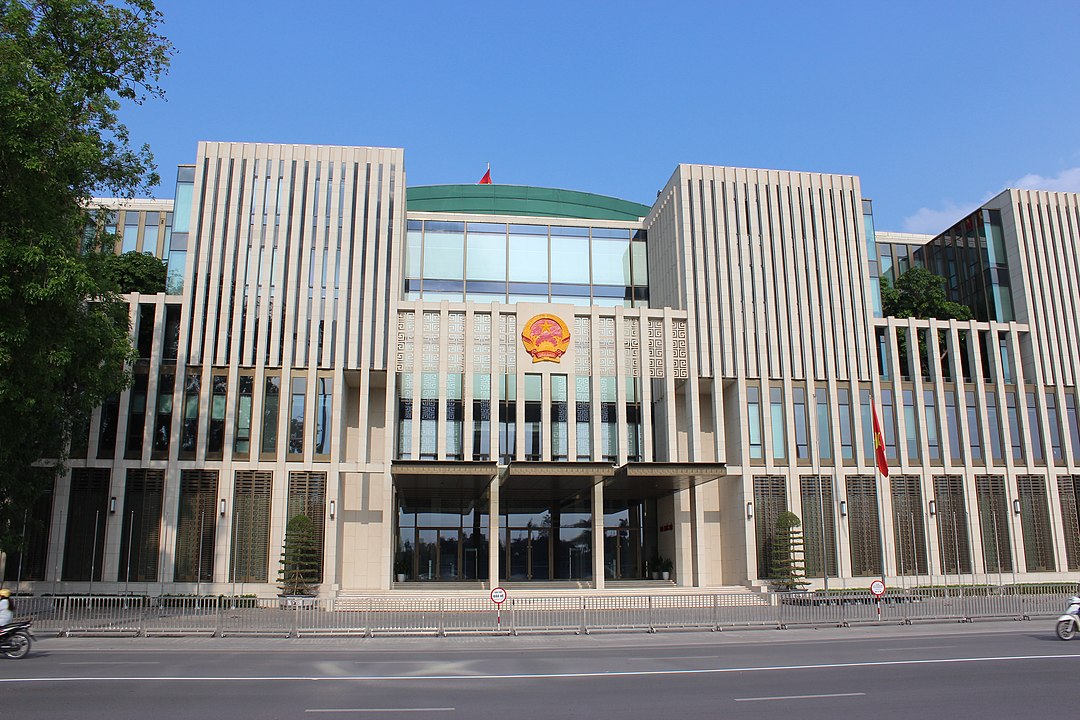The resurgence of special purpose acquisition companies (SPACs) as an alternative to traditional IPOs was one of the major talking points of 2020. SPACs enjoyed somewhat of a renaissance in 2020, particularly in the United States [1] and have become attractive propositions for investors, venture capital firms and private equity funds looking to efficiently deploy capital quickly and enhance their portfolios in an era of low interest rates and market volatility [2].
The SPAC boom showed little sign of slowing as it moved through the first quarter of 2021 [3] as investors continued to search for the most effective jurisdictions in which to incorporate SPAC vehicles. Offshore jurisdictions, including the Cayman Islands (Cayman) and the British Virgin Islands (BVI), have proven to be particularly well-suited to SPACs given their business-friendly, flexible and internationally recognized legal regimes, and SPACs continue to be incorporated in these jurisdictions at a growing pace across a number of sectors [4].
SPACs Explained
Also known as “blank check” or “cash shell” companies, SPACs are newly formed companies that raise capital by way of an initial public offering (IPO) for the purpose of using the proceeds to acquire or merge with one or more existing operating businesses. Unlike in a traditional IPO, the SPAC model is unique in that at the time of the IPO, a SPAC vehicle will have no portfolio investments, substantive operations or any investments earmarked for acquisition [5]. Upon listing, the net capital proceeds of the IPO are generally placed in a third party escrow / trust account [6], and a SPAC then has 12-36 months [7] in which to source and consummate a transaction, failing which the venture must normally be wound-up and the funds returned to investors [8].
For investors who buy units (a combination of shares and warrants) in a SPAC, the investment constitutes a bet on the ability of the SPAC’s experienced and often high-profile management team to quickly identify and consummate attractive investment opportunities – referred to as “business combinations” – post-IPO. It provides investors with access to the type of “buy-out” investment strategy typically restricted to private equity funds, while at the same time providing a degree of liquidity in that the shares of the SPAC are publicly traded. For founders, a SPAC is attractive as it enables them to raise funds for a “general acquisition strategy”, while typically providing greater flexibility and potentially superior economics than pursuing the same strategy through a private equity fund.
Once the SPAC has raised funds through its IPO and an appropriate target business has been identified, a business combination is effected that normally results in the target business being acquired by or merged into the SPAC. Following this so-called “de-SPAC-ing” process, a more conventional operating business structure exists and the surviving entity continues to operate as a publicly listed company under the rules of the relevant stock exchange.
Benefits of SPACs
SPACs offer a variety of potential benefits over a traditional IPO, with speed to market being chief among them, particularly when markets are volatile and agility is of the essence. Firstly, investing in and listing a SPAC does not require diligence of an existing operating company on IPO, and so it is usually a faster way to raise capital on public equity markets. In some cases, a company can go public in 8–10 weeks versus up to 12 months (or more) for a traditional IPO. Further, there is a defined timeframe within which the SPAC must complete an acquisition. And finally, a SPAC can move quickly to secure an acquisition target and de-SPAC relatively quickly due to its large cash reserves held in trust.
As noted above, SPACs, particularly those backed by private equity, also have highly experienced management teams who are charged with sourcing targets within pre-determined investment parameters. This feature, together with various investor protections (e.g. the right for investors to pre-approve a proposed target and, during the pre-acquisition phase, the right to have their investment returned if they don’t like the direction of travel) has dramatically increased the popularity of the SPAC model.
Offshore SPACs
Although SPACs pursuing US targets are typically incorporated in Delaware, more and more SPACs are using either a Cayman or BVI-incorporated company to list [9].
The graphs below show the jurisdictions of incorporation of all SPACs listed in 2020 (including the United States, Cayman and the BVI), as compared to 2019. It highlights a growing number of offshore incorporations [10]:
The large degree of legal flexibility and political stability in Cayman and BVI, along with their tax neutrality and wide acceptance on the global exchanges such as the NYSE, Nasdaq, London Main Market and AIM, provides an increasingly attractive option. In particular, both BVI and Cayman provide:
- rapid turn-around times for incorporation
- unrestricted objects / corporate capacity
- the ability to tailor constitutional documents to suit applicable listing rules
- the ability to issue different types of shares and warrants as required for particular SPACs
- flexible capital maintenance rules permitting distributions and redemption / repurchase of shares from a wide range of sources (if the company meets applicable solvency criteria)
- straightforward statutory merger regimes which enable the SPAC to merge with its target, as an alternative to a traditional share / asset purchase [11], [12]
- robust creditor protection (including in relation to the taking and enforcement of security), facilitating the borrowing of additional funds
- the ability to redomicile to another jurisdiction (if required at a later stage)
In addition to the above, the listing process for a SPAC in these offshore jurisdictions is generally streamlined and simpler [13], and, importantly, given the increased scrutiny around the economic terms of sponsors’ investments, BVI and Cayman give immense flexibility to structure incentives in whatever manner investors demand.
An Offshore Comparison
Cayman and the BVI are favored offshore jurisdictions for SPAC incorporations for several reasons, in particular due to the suitability of their company law to SPACs; limited additional regulatory compliance requirements; and the close similarity between aspects of BVI / Cayman and Delaware company law, which allows for an easy translation of existing standard legal forms and investor familiarity from one jurisdiction to the other.
Despite both jurisdictions having very attractive (and very similar) features, a high proportion of SPACs incorporated offshore were incorporated in Cayman in the first three months of 2021. Of the 94 SPACs incorporated offshore in Q1 of 2021, 91 were incorporated in Cayman, whereas only 3 were incorporated in the BVI. The story was similar in 2020, where, of the 126 SPACs incorporated offshore in 2020, 117 were incorporated in Cayman, whereas only 9 were incorporated in the BVI [14].
The reason for the lower number of BVI SPAC incorporations during the latest SPAC boom isn’t entirely clear [15]. Indeed, some of the features of BVI SPACs are arguably more attractive than Cayman-incorporated SPACs. For example, BVI SPACs, have pioneered novel SPAC features such as rights and the ability to extend SPAC life spans. Further, the approval thresholds for a merger process on a de-SPAC are more favorable in the BVI: whereas a Cayman statutory merger requires a special resolution passed in accordance with the articles of association (which, subject to a higher threshold required under a company’s articles of association, is a resolution passed by a two-thirds majority of those shareholders attending and voting at the relevant meeting), in the BVI, a statutory merger only requires an ordinary (simple majority) resolution passed in accordance with the articles of association.
In addition to the above, both Cayman and the BVI have particularly progressive, flexible and business-friendly company law legislation [16]. In particular:
- there is a high degree of flexibility to tailor bespoke governance and capital arrangements (including equity warrant and redemption provisions, the efficient functioning of which are critical to SPAC structures) and to adapt governing documents to applicable onshore listing rules and investor preferences
- there is a high degree of flexibility to tailor dual or multiclass investor voting rights, to mitigate the risk of “no votes” blocking proposed business combination transactions Cayman and BVI companies may have unlimited purposes / objects, which is important for SPACs with broad investment mandates
- both jurisdictions have efficient statutory merger regimes (modelled on Delaware law, as noted above) conducive to SPAC business combination transactions
- in the BVI, there is no mandatory concept of share capital / premium or capital maintenance (thereby avoiding the attendant cumbersome rules and restrictions regarding par value and share capital). Shares may be redeemed quickly and with minimal administrative hassle (the only requirement for distributions being satisfaction of a cash flow and balance sheet insolvency test)
- there is no BVI takeover code or equivalent or any specific statutory provisions which apply to listed BVI companies. This means a BVI company can elect to adapt and adhere to onshore codes and rules without the risk of “double legislation” [17]
- both Cayman and BVI companies listed on a U.S. exchange may be eligible to qualify as a “foreign private issuer”, thereby potentially benefiting from relaxed U.S. regulatory requirements and certain concessions (as compared to U.S. domestic issuers) regarding regulatory filings (quarterly financial reports not required), proxy solicitations (filings with SEC not required), audit committee requirements, and disclosure requirements regarding executive compensation and equity holdings of directors and officers
- the BVI has a straightforward and effective system for registration of security interests granted by a BVI company [18]. This, when combined with a sophisticated insolvency regime which is perceived to be friendly to secured creditors, facilitates the leveraged financing a SPAC may require to consummate a business combination transaction
- BVI and Cayman companies and company law are recognized by and familiar to sophisticated investors, lenders and securities regulators worldwide
Final Thoughts
The agility of the structure is a key reason that SPACs have exploded in popularity, and the offshore jurisdictions of the BVI and Cayman are well-placed to assist investors and companies with all stages of the SPAC life-cycle. Having flourished during a global pandemic, SPACs have seemingly come of age, particularly in the United States. Having said that, there has been a significant slowdown in US SPAC listings since April 2021 [19], which has stemmed, in large part, from the SEC’s increased scrutiny of, and guidance and warnings relating to, SPAC vehicles [20]. The SEC’s latest publication, a joint statement by John Coates, Acting Director of the Division of Corporation Finance, and Paul Munter, Acting Chief Accountant, was published on 12 April 2021.The statement highlights the SEC’s view on the accounting treatment of warrants issued by SPACs [21], and indicates that the SEC has several concerns about SPAC vehicles generally. This has led some commentators to suggest that further, increased regulation may follow in due course [22], and it remains to be seen whether the slowdown in activity will continue through Q2 2021 and beyond. However, our view is SPACs will remain popular vehicles and, looking across the Atlantic, provided the recommendations in the recent UK Listing Review are implemented, we expect there to be significant interest in SPACS in the UK and European market in the coming years [23].
The opinions expressed in this article are those of the authors and do not reflect the opinions of InHouse Community Ltd, or it’s employees.
For further information, please contact your usual Conyers contact or one of the contacts listed below.
Anton Goldstein
Partner
anton.goldstein@conyers.com
+1 284 852 1119
Matthew Stocker
Partner
matthew.stocker@conyers.com
+1 345 814 7382
Alex Davies
Counsel
alex.davies@conyers.com
+1 345 814 7375
Christopher Smith
Associate
christopher.j.smith@conyers.com
+1 284 852 1160
29th Floor, One Exchange Square, 8 Connaught Place, Central, Hong Kong
conyers.com/markets/hong-kong/
[1] 248 SPACs were listed in the United States in 2020, raising approximately US$83 billion with the average capital raised at IPO being US$336 million (SPAC Research).
[2] SPAC investment vehicles offer several advantages over more traditional acquisition and investment holding structures (e.g. ensuring significant cash reserves and investor protections etc.), and are expected to become a major part of how investors and PE / VC firms do business over the next several years.
[3] 135 US-incorporated SPACs were listed in the first three months of 2021 and 94 Cayman and BVI-incorporated SPACs were listed. More SPAC listings have taken place in Q1 2021 (a total of 310) than took place in the whole of 2020 (SPAC Research and S&P Global Market Intelligence).
[4] Recent notable Cayman-incorporated SPACs include Ares Acquisition Corporation (NYSE: AAC), which raised circa US$900 million in January 2021, and Austerlitz Acquisition Corporation II (NYSE: ASZ), which raised US$1,200 million in February 2021. Recent notable BVI incorporated SPACs include Kismet Acquisition One Corp (NasdaqCM: KSMT) which raised US$250 million in July 2020, and AdvancedAdvT Limited (LSE: ADVT), which raised US$181 million in March 2021 and on which Conyers advised.
[5] Applicable onshore securities laws and listing rule requirements effectively prohibit any substantive discussions with potential targets prior to an IPO.
[6] Note that an escrow / trust account is not required (and is therefore uncommon) for LSE main market listings.
[7] There is a maximum 36-month time limit in which to source and consummate a transaction for NASDAQ listings, although most SPACs designate a 24-month period from IPO closing to consummation of a transaction. The primary period can, however, be extended with investor consent (or if a binding letter of intent to consummate a business combination has been signed prior to expiry of the primary period).
[8] For NASDAQ listings, the SPAC must then return the balance of the escrow account to its public investors (i.e. to investors other than the founders such that the founders’ equity in the SPAC will become worthless if a business combination is not consummated).
[9] Sponsors are increasingly also utilizing Cayman-incorporated LLC’s as the sponsor vehicle instead of a Delaware LLC.
[10] It also highlights the small number of UK-incorporated SPACs (as well as the small number of SPACs listed on the LSE). One of the main disincentives to a UK SPAC listing is that making an acquisition generally requires a suspension of the SPAC’s listing. This is seen as a key deterrent for potential investors, as there is a risk that they will be “locked in” to their investment for an uncertain period once the SPAC identifies an acquisition target, even if they want to exit due to differences of view over the target or for other reasons. While beyond the scope of this memo, it is worth noting that the UK government recently launched a consultation into how the UK’s listing regime might be reformed to improve the UK’s competitiveness as a global listing center and attract more companies. The results of the consultation, entitled the UK Listing Review, was published on 3 March 2021, and contains 15 recommendations, among which is the proposed removal of certain structural impediments in the UK Listing Rules for SPACs, aligning the rules more closely with the applicable rules in the US (for further details, see here).
[11] Importantly, merger consideration payable may generally take any form approved by the shareholders, including one or more of a combination of cash, asset transfer or share issuances.
[12] Note that the approval thresholds for a merger process do differ slightly between offshore jurisdictions (see below).
[13] Note, however, that the lack of an operating history and underlying business can sometimes limit the types of listing available to a SPAC.
[14] This is in contrast to the numbers of offshore SPACs incorporated during the high period of activity a few years ago (i.e. between 2014 and 2018), where the numbers were a little more evenly balanced.
[15] Although one can hypothesize that the increased participation of private equity sponsors in the SPAC market has favored Cayman given the dominance of Cayman as a jurisdiction for private equity funds.
[16] For a full breakdown of the similarities and differences between BVI and Cayman law relating to offshore companies, see our comparison document here.
[17] The Cayman Islands Code on Takeovers & Mergers only applies to companies whose securities are listed on the Cayman Stock Exchange (save for open-ended funds).
[18] The Cayman Islands has no system for the registration of security interest. However, Cayman Islands companies are required by statute to maintain a register of mortgages and charges.
[19] Over 50 SPACs were listed in the US in March 2021, whereas only 10 have been listed so far in April 2021 (SPAC Research).
[20] The SEC fist addressed the surge in SPAC activity in December 2020, when it published guidance reminding participants to “clearly” disclose potential conflicts in launching an IPO or considering a merger. Further guidance published in March 2021, reminding participants that SPACs are subject to shell company regulations, must abide by Exchange Act books, records and internal control rules and, when a SPAC is listed on a national exchange, the company must satisfy initial listing standards.
[21] Historically, many SPACs, with the support of several accounting firms, have classified the warrants as part of equity of the entity. The joint statements suggests that the SEC has concerns that the warrants issued by many SPACs should be properly accounted for under the liability method on the balance sheet. As such, the SEC advises that companies with these outstanding warrants (whether SPACs or the combined company following a de-SPAC transaction) consider the need to amend previously-filed audited and unaudited financial statements.
[22] See, for example, recent articles published by The Wall Street Journal, MarketWatch and Private Equity International.
[23] For further details, see the UK Listing Review, here.



















